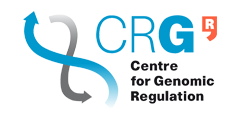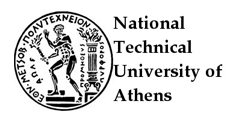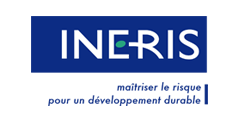Project Partners
Edelweiss Connect (previously known as Douglas Connect and renamed to Edelweiss Connect (EwC) as from February 2019) is a Swiss SME located in Basel, specialised in developing and implementing R&D projects, communities and collaboration to transfer solutions for industrial use and advance regulatory acceptance. EwC has experience in scientific research integrating data, in silico and in vitro methods and related infrastructure, and has been involved in organising scientific, communication and knowledge management and solutions development projects since 2008
EwC served as Project Coordinator of the OpenTox project which developed an Open Source Predictive Toxicology Framework for the management of toxicology data, algorithms, models and validation. OpenTox subsequently has become the leading global open platform for predictive toxicology supported by open standards and the basis for many follow-up EC and industry projects. EwC was the Scientific Coordinator of ToxBank, project which developed the infrastructure and predictive toxicology support resources within the SEURAT-1 program. Between February 2014 and January 2017, EwC coordinated the eNanoMapper project whose goal was to propose and organise an integrating data, modelling and ontology infrastructure for the EU NanoSafety Cluster.
Currently, EwC is also involved in EU H2020 projects ACEnano, EU-ToxRisk and NanoCommons, with an important role building knowledge sharing infrastructure, modelling and community outreach. EwC led the Eurostar’s project ToxHQ from 2016 through 2018 whose goal was to commercialise new methods in predictive toxicology and risk assessment through establishing industry-driven solutions and an integrating business ecosystem.
The Johannes Gutenberg University Mainz (JGU) was founded in 1477, and is with more than 36,000 students one of the ten largest universities in Germany. As a comprehensive university, JGU combines almost all academic disciplines under one roof, including the Mainz University Medical Center, the School of Music, and the Mainz Academy of Arts. This is a unique feature in the German academic landscape. Some 4,150 academics, including 540 professors, teach and conduct research at JGU's more than 150 departments, institutes, and clinics. The JGU is the main research university in the natural sciences in the state of Rhineland-Palatinate and among the top universities in Germany in the fields of natural sciences and mathematics. The JGU has extensive experience with international and national collaborations and maintains a network of 145 co-operations with partner universities on all continents.
The data mining group of the institute of computer science, headed by Prof. Dr. Stefan Kramer, has a long and extensive experience in the development and the implementation of web services in the areas of medical, biological, and chemical data mining and machine learning, mainly concentrated in the area of toxicology and small molecules. The group is among the most active and visible groups in data mining and cheminformatics in Europe. It is committed to making its methods available as infrastructure solutions to cheminformatics, toxicology and related fields. With successful applications like CheS-Mapper and enviPath, the JGU and its Data Mining Group provide valuable analysis environments for the community and the users.
The Centre for Genomic Regulation (CRG) is a non-profit foundation created as a partnership between the Catalan Government and the Spanish Ministry of Education and Science and affiliated with the Pompeu Fabra University (UPF). The CRG is a first-class multidisciplinary research centre focusing on biomedicine, located in the Biomedical Research Park of Barcelona (PRBB), one of the largest biomedical research clusters in southern Europe. Research at the CRG is organized around 4 programmes led by outstanding international scientists, of which over half hold an ERC grant: EMBL/CRG Systems Biology Unit (Coordinator: Dr. James Sharpe), a joint programme between CRG and European Molecular Biology Laboratory (EMBL) with resources shared between the two centres; Bioinformatics and Genomics (Coordinator: Dr. Roderic Guigó), Gene regulation, Stem Cells and Cancer (Coordinators: Dr. Juan Valcarcel) and Cell and Developmental Biology (Coordinator: Dr. Vivek Malhotra). In addition, since the 1st July 2015 the Centro Nacional de Análisis Genómico (CNAG) has been integrated to CRG. CNAG is led by Dr. Ivo Gut and has a headcount of 66 staff. The center is organized in two production-oriented groups for Sequencing and Bioinformatics Analysis that secure seamless operation, and three research groups focused on Bioinformatics Tools Development, Applied Genomics and Genome Biology. The scientific excellence of CRG is underlined by: (i) the outstanding publication record (9th worldwide in the health sector, according to the Q1 indicator in the Scimago Institutions Ranking (SIR) World Report 2014), (ii) the quality of its international staff (around 70% of the research staff is non-Spanish) and (iii) the successful external funding record (14 ERC projects; 20 projects awarded from H2020, of which 5 are coordinated by CRG PIs; 70 projects in total from FP7).
Focusing on the Marie Skłodowska-Curie actions, in FP7 24 Individual Fellowships (IFs) and 2 COFUND Programmes (InterPod / ImPulse) were obtained, while in H2020 4 IFs and 2 Innovative Training Networks were awarded. CRG is one of the Spanish research centres of excellence awarded with a highly-competitive ‘Severo Ochoa’ grant. In addition, in 2013 the CRG was awarded the HR Excellence logo by the European Commission to recognize the institute´s commitment to improve human resources policies for researchers.
The CRG hosts a well-known International PhD Programme (currently training around 100 young researchers - almost 70% international) and a Postdoctoral Programme with highly talented young researchers, and provides mentoring and high-quality training courses, weekly seminars (Data Clubs, Journal Clubs, Lab Meetings, Programme Seminars and Group Leader seminars) and seminars with top invited speakers. The CRG cannot grant PhD titles, but can establish partnerships with Universities to award PhD degrees for experimental work carried out at CRG.
Partner Maastricht University will lead work package 4 in this project. The OpenRiskNet project will be embedded within the Faculty of Health, Medicine and Life Sciences which forms, with the Academic Hospital Maastricht, MUMC+ (Maastricht University Medical Centre). Partner UM will be represented by its Departments of Toxicogenomics and Bioinformatics – BiGCaT.
The Department of Toxicogenomics represents one of Europe’s leading research teams in the domain of genetic and hepatic toxicology in particular in the field of in vitro toxicogenomics. Our work emphasizes on in vitro approaches for developing alternatives to current animal toxicity tests, as well as on studying gene-environment interactions in human volunteers, in environmentally exposed groups and patients. The Department of Toxicogenomics is chaired by Prof. Jos Kleinjans and counts 30 scientific employees. The Department is well experienced in managing EU research consortium, has coordinated EU FP6 & 7 Integrated Projects NewGeneris, carcinoGENOMICS, diXa and Phytome, and is currently coordinating FP7 project HeCaToS. The diXa project (Data Infrastructure for Chemical Safety) supported by DG CONNECT will be implemented in the current OpenRiskNet proposal. diXa provides a single resource for capturing data produced by toxicogenomics studies from past, present and future EU research projects and beyond, and to ensure sustainability of such a resource for use by the wider research community. This data collection has been complemented by the development of online analytical resources and links to other globally-available chemical/toxicological and human disease databases - with a focus towards the development of non-animal tests for prediction of chemical safety. Furthermore, the department of Toxicogenomics is partner in the H2020 project EU-ToxRisk.
The Department of Bioinformatics – BiGCaT, founded in 2001, is well known for integrative systems biology approaches. With the biological pathway resource WikiPathways at the heart the department develops and applies approaches for pathway and network analysis to increase insight in biological processes. The research focus is on nutritional health but applications in drug development, toxicology, diseases and even agricultural show the versatility of the approaches used. Integrative systems biology needs both knowledge integration and experimental data organisation and processing. And both these aspects need (in part the same) interoperability approaches. The department is involved in emerging big data projects like ELIXIR-EXCELERATE, the new COST CHARME on harmonising standardisation strategies (Prof. Evelo leads the WG on software solutions), the IMI project Open PHACTS for semantic web based knowledge structuring in drug development and the FAIR initiative, the EuroDISH ESFRI on infrastructure for food and nutrition research and the related phenotype foundation that develops an ISA based study capturing framework along with various data processing pipelines (arrayanalysis.org is an example that runs in Maastricht itself), and the eNanomapper meta-ontology and data handling project.
The University of Birmingham (UoB) has approximately 26,000 students and 6,000 staff. It is one of only 11 UK universities to feature in the list of the world’s top 100 universities and is one of the elite UK Russell Group Universities. UoB is a large and highly research active university with significant strengths in nanoscience, nanotechnology, human health and environmental science. UoB hosts Alta Innovations, a knowledge-transfer agency owned by the University, whose aim is to support interactions of academics with industry and facilitate commercialization of UoB research. The Centre for Computational Biology (CCB) combines the three major components: applications, training and development, disseminated through the many fields of expertise found within the diverse domains of the Colleges of Medical and Dental Sciences, Life and Environmental Sciences, and Engineering and Physical Sciences. The CCB aims to promote excellence in Computational Biology, Systems Biology, and Bioinformatics across the range of fundamental and applied sciences, to federate expertise through world class, independent and collaborative research, as well as teaching to a broad audience ranging from undergraduates to health care professionals. To achieve these aims, CCB provides an environment, both physical and structural, to foster collaborative work and cross-pollination. The CCB main areas of research include integrative systems biology, biomedical knowledge formalization, standardisation and representation, large data integration and analysis, comparative phenomics, chemical and clinical informatics.
The School of Geography Earth and Environmental Sciences (GEES) achieves international excellence in teaching and research with 95% of research in the School being internationally or globally leading. A particular expertise within GEES is Environmental Nanoscience, coverall all aspects from nanoparticle synthesis and labelling through characterisation of the bio-nano interfacial interactions including during ageing and the consequence of these for nanoparticle fate, behaviour and impact. The Environmental Nanoscience group at UoB run the UK analytical facility for Environmental Nanoscience (FENAC) and coordinate several EU FP7 projects (NanoMILE, EcoFriendlyNano and ModNanoTox).
The National Technical University of Athens (NTUA) is the oldest and most prestigious educational institution of Greece in the field of technology, and has contributed unceasingly to the country's scientific, technical and economic development since its foundation in 1836. NTUA is divided into nine academic faculties, which are furthermore divided into 33 departments. The amount and the high standards of the research work conducted at NTUA are illustrated by the numerous publications in Scientific Journals as well as by the prominent place of NTUA among European Universities, due to the high number of research projects financed by the EU and other Greek and foreign organizations of the public and private sector.
The group of Process Control and Informatics belongs to the School of Chemical Engineering at NTUA. It is composed of two faculty members, four post-doc researchers and several graduate and undergraduate students. The research work of the unit is focusing on knowledge discovery, data mining and predictive modelling by developing and implementing statistical methods and advanced machine learning and computational intelligence algorithms. NTUA has participated in the OpenTox FP7 project and now is a partner in the eNanoMapper FP7 project, leading the WP on “Modelling and Analysis”. NTUA has been involved in the design of APIs, the design and implementation of SSO-based authorization and authentication services, the development, implementation and integration of algorithm web services, the generation and validation of predictive models and the creation of user interfaces and reporting tools.
The Fraunhofer Society is one of the largest scientific societies for applied research worldwide. It comprises 60 institutes in Germany with more than 20,000 employees. The mission of the Fraunhofer Society states “The Fraunhofer-Gesellschaft promotes and undertakes applied research in an international context, of direct utility to private and public enterprise and of wide benefit to society as a whole”. The PI representing Fraunhofer in the OpenRiskNet, Marc Jacobs, is Deputy Head of the Department of Bioinformatics at Fraunhofer Institute for Algorithms and Scientific Computing (SCAI).
The Department of Bioinformatics Fraunhofer (SCAI) is doing applied research and development in the field of information extraction / semantic text analysis, applied chemoinformatics, advanced data mining and disease modelling (with a special focus on neurodegenerative diseases). In compliance with the general mission of a Fraunhofer Institute, the Department of Bioinformatics is working closely with industrial partners to enhance their competitiveness through mediating knowledge and technology transfer from academic research to industrial application. Positioned at the border between commercial and academic research, Fraunhofer SCAI maintains strong links to both communities. In the field of modelling of neurodegenerative diseases, SCAI is one of the leading European research groups. As an organization dedicated to applied research, the department takes part in various national and European research initiatives and projects.
Uppsala University (UU) is the oldest university in the Nordic countries with 41.000 students, 6.500 employees, and an annual turnover of 600 M EUR. UU has a strong international position and a large focus on biological and medical research with the recently established Science for Life Laboratory (SciLifeLab) concentrating Sweden’s biological data-generating platforms encompassing e.g. 10 HiSeq X, 16 HiSeq 2500, 2 PacBio and various other technologies. The UPPMAX high-performance computer center at UU is a node in the Swedish National Infrastructure for Computing (SNIC) with the focus areas bioinformatics, data-intensive computing, and management/analysis of sensitive data. UPPMAX had in 2013 over 700 active users in 450 projects, primarily for analysing next-generation sequencing data where projects include large sequencing efforts such as the genomes of Norwegian spruce, flycatcher, crow and herring. The National Bioinformatics Infrastructure Sweden (NBIS) provides support and infrastructure for the life sciences over all disciplines, and is the Swedish node in ELIXIR. UU represents a hub in the Swedish e-infrastructure for life science and with access to competence and skilled personnel.
The Division of Molecular and Computational Toxicology within the Department of Chemistry and Pharmaceutical Sciences (moltox.chem.vu.nl) at Vrije Universiteit Amsterdam is concerned with the development of novel concepts involved in drug disposition and drug safety, and their application in forefront research in drug discovery & development and safety assessment. Integration of advanced computational and experimental approaches is key. The Division previously headed by Prof. Dr. Nico P.E. Vemeulen and now by Prof. Dr. Paul Jennings comprises six staff members, four post-docs, ten PhD students and a constant flow of BSc and MSc Students from within and outside of the Department. We are part of the Leiden/Amsterdam Center of Drug Research and the Amsterdam Institute for Molecules Medicines and Systems. Our staff is involved in a variety of courses in the context of Bachelor and Master courses within the Pharmaceutical, Biomolecular and Medical Natural Sciences as well as Chemistry curricula. Besides, we are directly involved within the LACDR graduate program, the Europin initiative, and academic leader of the European IMI-JU SafeSciMet program.
Informatics Matters Ltd. is a SME based in Oxford UK specialising in creation of scientific software, particularly cheminformatics and bioinformatics based software. IM has been in existence for about 16 years. Much of the work has involved creating software systems for customers, handling the entire application stack from the end-user interface to the database. Much of the work was done with ChemAxon Kft., a leading cheminformatics software provider who out-sourced much of their custom development project to IM. Examples of work done by IM include:
- Instant JChem: A ChemAxon desktop chemistry workbench product that was conceived and jointly developed by IM and ChemAxon, and marketed by ChemAxon. Instant JChem is ChemAxon’s bestselling end user product.
- Chemical dictionaries: A set of chemical dictionaries created by IM for CRC Press packaged as DVD-based product.
- LeadMarker: A chemical library and HTS management package created jointly with Managed Ventures LLC.
- European Lead Factory WP9/10 Portal: The web based portal for the IMI European Lead Factory project developed by ChemAxon by people currently working for IM.
- Various custom software systems developed by IM people on behalf of ChemAxon for customers such as Novartis, DuPont and DOW.
IM is currently creating a new enterprise scientific workflow product named Squonk that is highly relevant to this proposal. As a result of these and other developments IM has broad and deep expertise in scientific software development, incorporating software from many commercial and open source toolkits. IM has considerable expertise in software packaging and deployment, including containerisation using Docker. The primary programming language used is usually Java, but we also have expertise in many other languages.
INERIS is a large public research institute whose mission is to provide scientific and technical assistance to the French Public Authorities and industrial partners, particularly on chemical safety. With a staff of 600 persons, INERIS has extensive facilities and competence in toxicology in vitro, in vivo, and in silico. INERIS has experience in participating and managing large international research projects, including for the European Commission.
Within INERIS, the DRC/VIVA/METO (Models for Ecotoxicology and Toxicology) Unit, which includes 7 staff researchers, focuses its research activities research activities on biomathematics, biostatistics and bioinformatics with applications to systems biology, quantitative in vitro to in vivo extrapolation, and predictive toxicology. METO is or has been involved as a partner or co-coordinator in a number of recent EU projects (PREDICT-IV: WP leader for modeling activities toward repeated dose toxicity predictions; COSMOS: PBPK developments for ab initio predictions of toxicity; StemBANCC: systems biology models for induced pluripotent stem cell assays extrapolation, EuroMix: PBPK and systems biology models for mixtures of substances, Eu-ToxRisk: WP leader for quantitative AOP modelling, Bayesian network developments and systems biology models).
Established by the French Government in 1990 as the National competence centre for Industrial Safety and Environmental Protection, INERIS has developed expertise in the areas of chronic and hazardous risks. Our mission is to carry out or commission studies and research programmes aimed at preventing the risks brought about by economic activities on health, the safety of persons and property and on the environment, and to provide any services intended to facilitate the adaptation of companies with this objective in mind.
Associated Partner Programme
To ensure the usability of the infrastructure, alignment with the community as well as to pursue complete coverage of important tools, OpenRiskNet works with a network of partners, organized in the Associated Partners Programme.
More →









